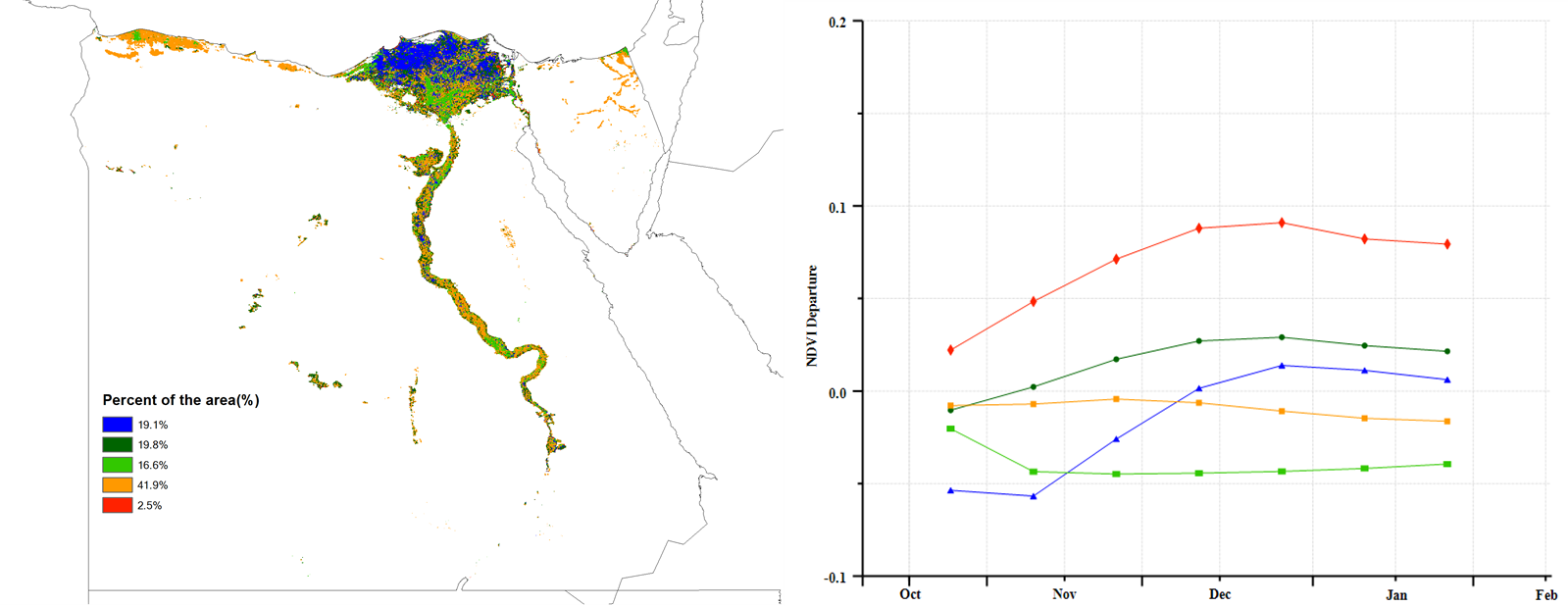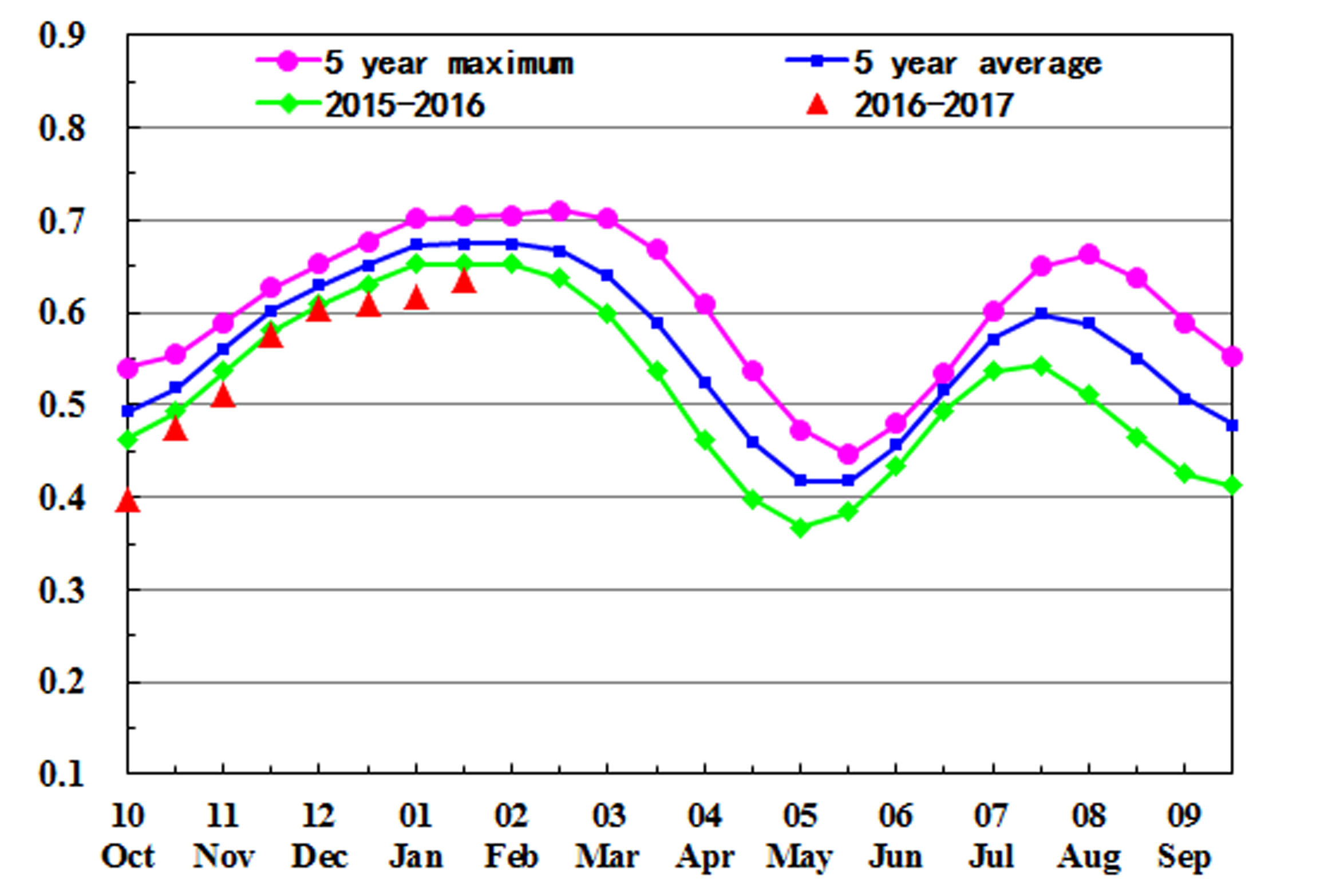
Bulletin
wall bulletinMenu
Authors: 超级管理员 | Edit: xingqiang
In Egypt, the monitoring period covers the harvesting season of maize and rice, as well as the growing season of winter wheat and barley. The CropWatch agroclimatic indicators show that the period was characterized by a decrease of rainfall below average (RAIN, -35%) and a slight reduction in biomass production potential (BIOMASS, -3%), while temperature and RADPAR were about average (-0.6°C and 0% departures, respectively).
Apart from the sunshine, however, weather plays a minor part in a country where almost all crops are irrigated. The national crop condition development graph based on NDVI shows that crops were significantly below the average of the past five years and below that of the similar monitoring period (October-January) in 2015-2016. The maximum VCI and the spatial NDVI profiles show relatively good crop condition in the delta, while conditions are mixed in the Nile valley, especially in the south, together covering about 50% of the arable land. In general, for this monitoring period, winter crops in Egypt are assessed as below average.
(a)Crop condition development graph based on NDVI (b)Maximum VCI

(c)Spatial NDVI patterns compared to 5YA (d)NDVI profiles


